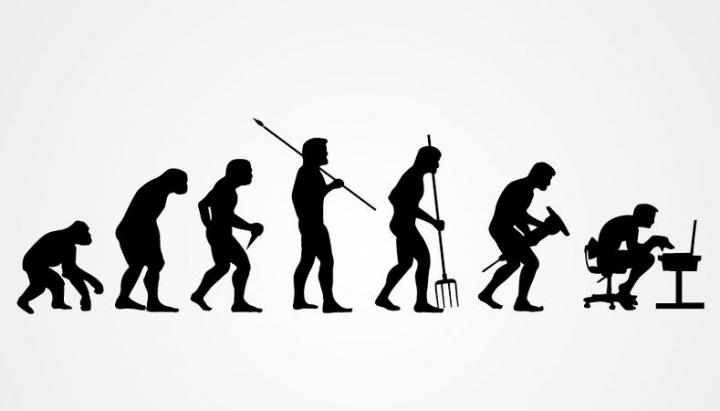Zoom Fatigue: Staying Embodied Online
Drop-in posts written by Dr Kitty Wheater
28th April
Dear all,
A warm welcome back to the mindfulness drop-in. This week, something that may resonate with those of you who feel your heart sink at the prospect of yet another online meeting...
Zoom Fatigue: How to Stay Embodied Online

‘Shall we use Skype, Zoom, Teams, or Facetime?’ someone asked me wearily the other day. I was struck both by the dizzying multiplicity of the technologies we currently need for work and life, and by the weariness.
‘Zoom fatigue’ is officially a phenomenon, writes Julia Sklar for National Geographic – and this has come as a surprise to many of us. Yet across the board, students and staff report that online meetings are tiring in a way that in-person meetings are not. Staff describe needing more time to decompress after meetings, while conversations that in person would have been energising seem unexpectedly to drain.
Why is this? As Sklar explains, ‘During an in-person conversation, the brain focuses partly on the words being spoken, but it also derives additional meaning from dozens of non-verbal cues, such as whether someone is facing you or slightly turned away, if they’re fidgeting while you talk, or if they inhale quickly in preparation to interrupt.’
As social beings, this interpretation comes naturally to us and takes place below the level of conscious effort. But ‘a typical video call impairs these ingrained abilities, and requires sustained and intense attention to words instead.’ Online, we can’t see much of a person’s body language; if the lighting is poor, or the image pixelated, we don’t catch the details of their facial expression. In meetings with multiple people, the tiny images on Zoom remove even more of this information, while on Teams, we can only see the last few people to have spoken. We lose the sense of the people in the room, the energy, the mood, the interest.
Meanwhile, that sustained and intense attention to words is tiring, particularly as our attention is also being fragmented by video’s partial visual cues. When this happens, we are essentially multi-tasking, which is known to be psychologically stressful and inefficient. In a long meeting with lots of people, we may find ourselves mentally checking out, or becoming bored. When we ourselves feel unseen, it’s even easier to quietly disappear into some other task. We’ve all been in the meeting where someone’s emails are perfectly reflected in their spectacles.
A Tweet from Gianpiero Petriglieri, professor of management at INSEAD, seems to sum up the human challenge: ‘I spoke to an old therapist friend today, and finally understood why everyone’s so exhausted after the video calls. It’s the plausible deniability of each other’s absence. Our minds tricked into the idea of being together when our bodies feel we’re not. Dissonance is exhausting.’
Posted on April 4th, nearly 37,000 people have liked Petriglieri’s Tweet so far. It seems many of us are having this experience. So how might we reduce some of that sense of disembodiment and dissonance – that gap between what is, and what seems to be, in which boredom, irritation, dissatisfaction, and fatigue emerge?
1. Remember Your Body
One approach is to check in with the felt sense of your own body throughout an online call. Notice the soles of your feet against the floor, the sensations of your seat on the chair, and the weight and contact of your hands in your lap or on your desk. When you begin doing this, it may feel like a surprise to remember that we have feet, or hands. This shows how disembodied the attention has become while online: pulled into the screen and trying to make out the nuances of facial expression; or pulled to the words, and straining to understand their conceptual content. You may pick up on this if you tune into your own body language: are you tilted or hunched forward on your chair, towards your screen? If apathy has set in, you may be slumped back completely. When you pick up on these, bring your attention back into the felt sense of the body sitting. You may also find it helpful to shift your posture; something to remind yourself that your body is here, sitting and breathing. This helps to close the ‘gap’ between body, sitting at your desk, and mind, in the substance of the call.
Over time, you may find that keeping some of your attention in the felt sense of your body sitting actually allows you to ‘receive’, with less effort, the meaning of the words being spoken in the call. Online you may not be able to tune into the nuances of others’ bodies or faces, but your own body picks up on more than you realise. Staying connected to it will help you process the cognitive and affective information being transmitted at the level of conversation.
2. Take Time to Transition
A second approach is deliberately to take time to settle and ground yourself both before and after an online call. By acknowledging these transitions, they come as less of a surprise to your social nervous system. You might take a three-step breathing space before and after a meeting, to help you consciously clock the content of the mind, and step back into the present moment. For a long call, have a glass of water to hand, and check that you are comfortable and your back is supported in your seat.
3. Move and Stretch
You may have noticed that when you hang up after an online meeting, you yawn, stretch, or sigh; this is your nervous system down-regulating, so follow the wisdom of its cues, and take some time to follow it through. For a short and structured way to go about that, this mindful movement practice is just 9 minutes long. If it’s been a particularly stressful or discombobulating meeting – or you’ve simply been online all day – this half hour of gentle stretching followed by a sitting practice could be just what’s needed to help bring your attention back into the body, and the here and now.
Zoom and its parallels are, in myriad ways, a complete boon at this time – and there’s growing awareness that particularly for those on the autism spectrum, video calls may actually be easier and less anxiety-provoking than large in-person meetings. But it’s also understandable that for many of us, with our social minds as human beings complexly evolved over millennia, the ramped-up use of video conferencing presents some unanticipated challenges. You’re not alone in this, so take time to breathe and move – and if all else fails, there’s Britain’s standard energy-lifting go-to: an old-fashioned cup of tea!
Wishing you all a good week,
Kitty


